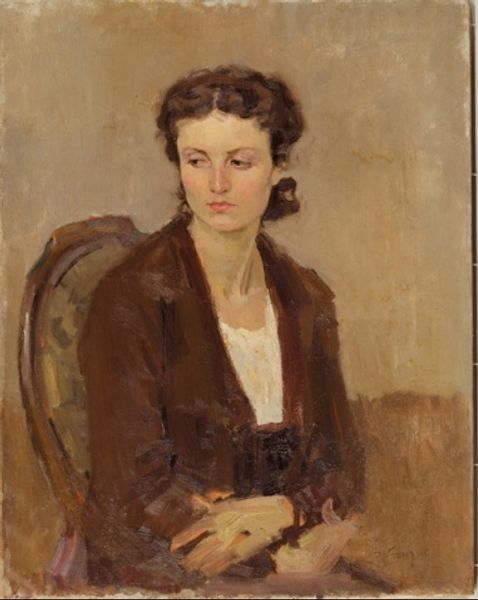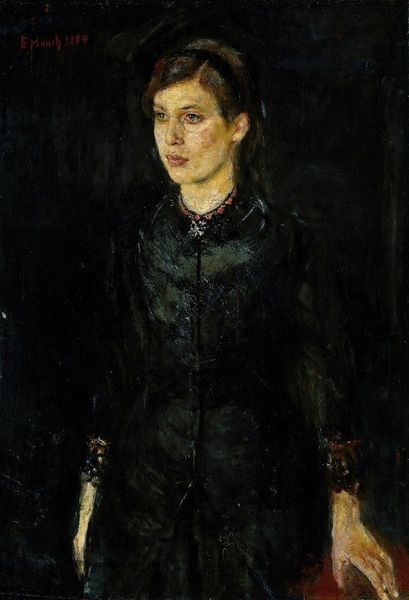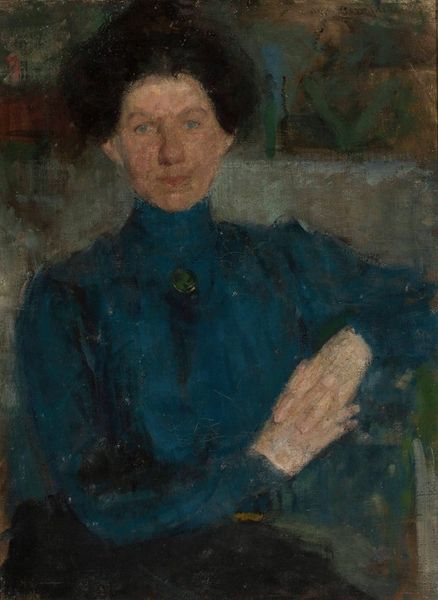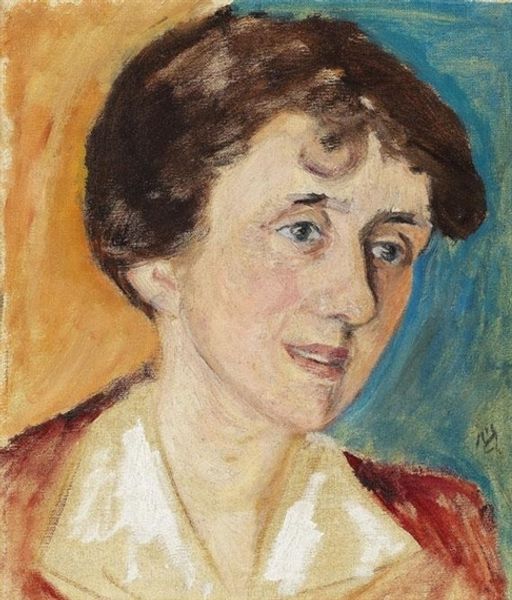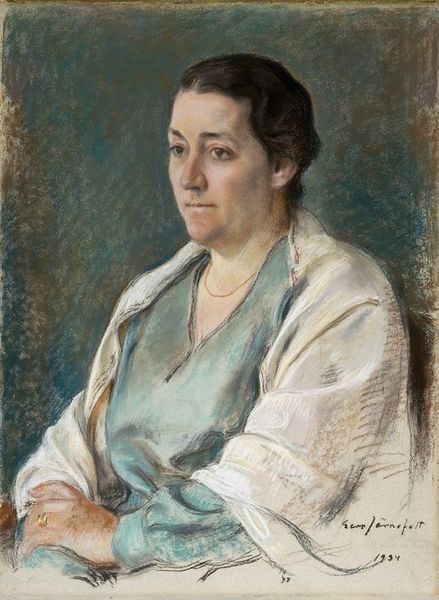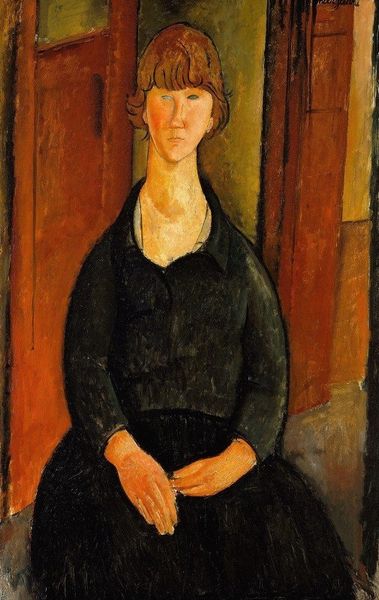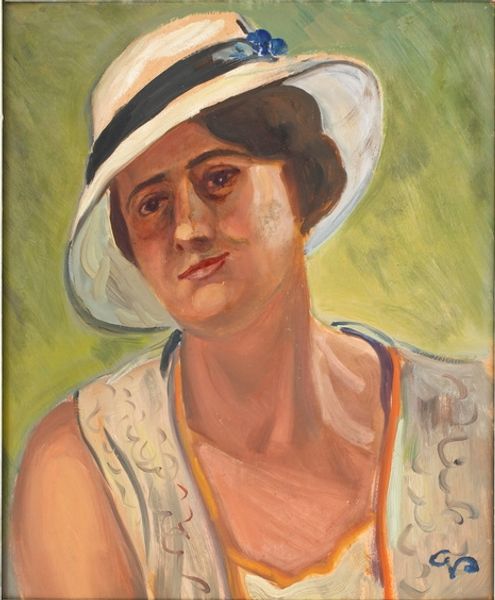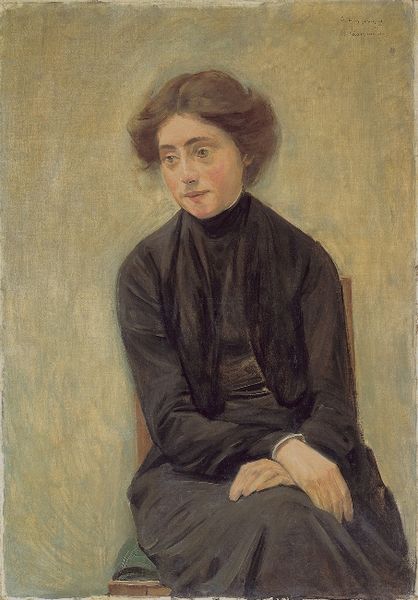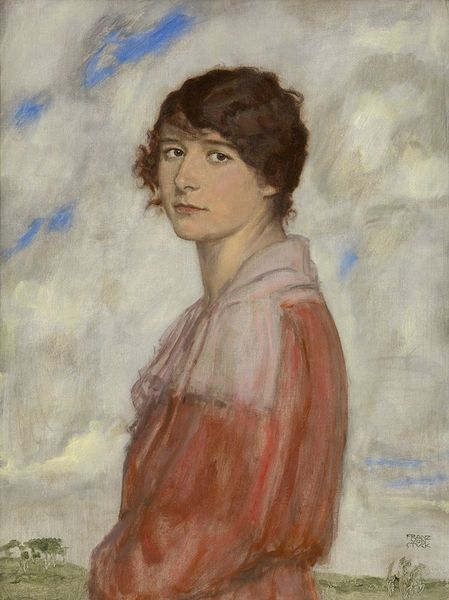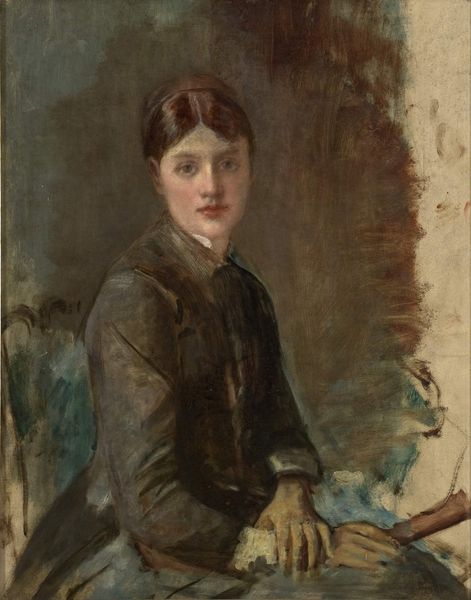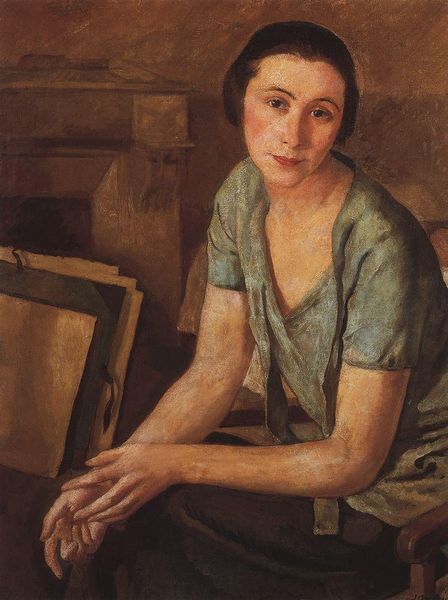
Copyright: Public Domain: Artvee
Max Liebermann painted "Käthe Liebermann – Die Tochter des Künstlers" using oil on canvas. It presents a portrait of his daughter, embodying the social conventions and artistic trends of its time. Painted in Germany, likely in the late 19th or early 20th century, Liebermann captures his daughter with a sense of understated dignity. The muted palette and loose brushwork align with the influence of Impressionism, yet the formality of the portrait reflects the social status of the Liebermann family. Consider the role of artistic patronage in this era. Liebermann, as a prominent figure in the art world, was influenced by the prevailing tastes of the bourgeoisie who were his patrons. The painting doesn't overtly challenge social norms but rather reinforces the values of family and tradition. To fully understand this work, one might explore the social history of Germany during this period. Research into the artist's biography and the reception of his work within the context of Berlin's art institutions would provide further insight. Ultimately, this portrait serves as a window into the cultural values and artistic practices of its time.
Comments
No comments
Be the first to comment and join the conversation on the ultimate creative platform.
